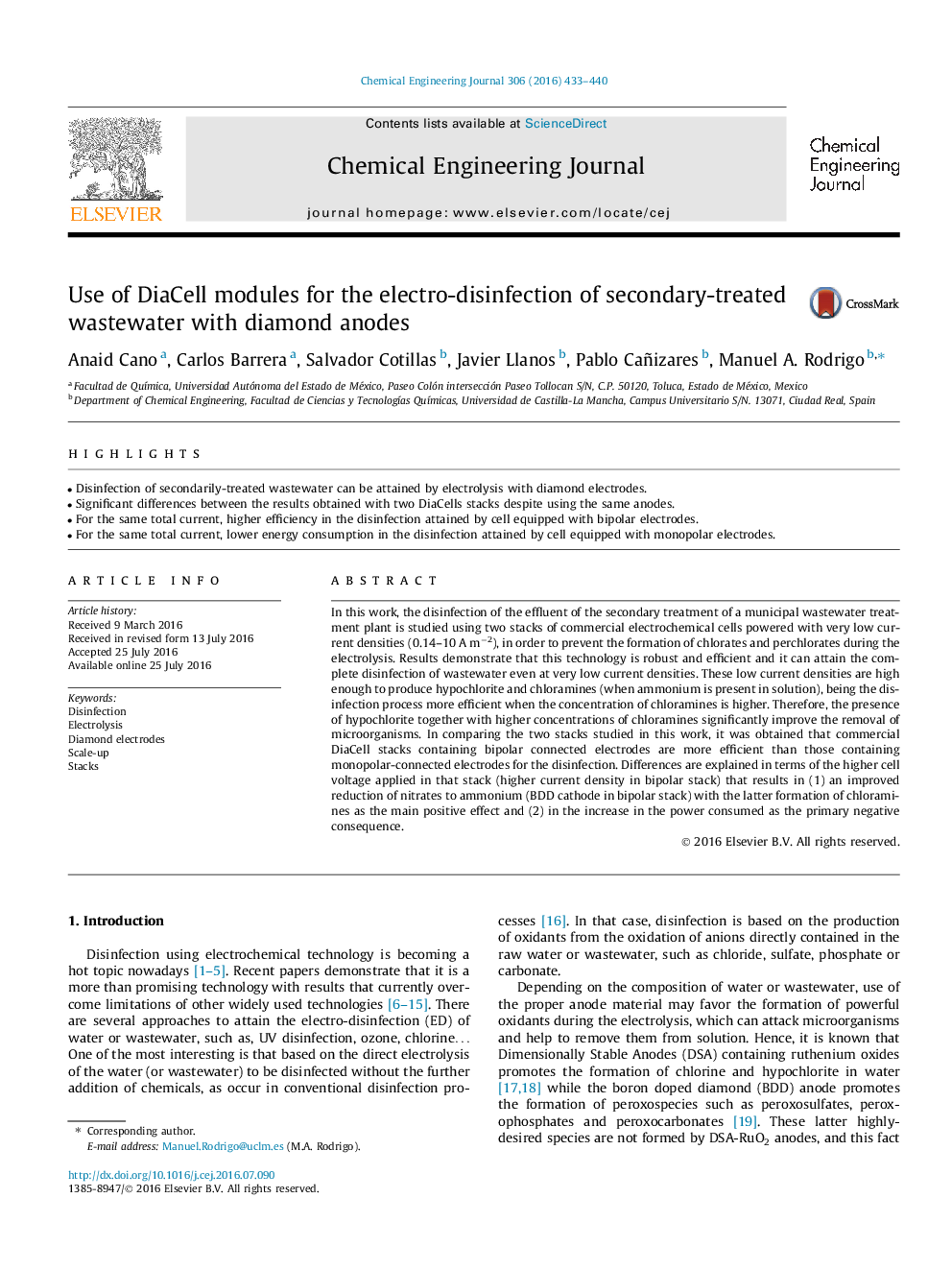| Article ID | Journal | Published Year | Pages | File Type |
|---|---|---|---|---|
| 145261 | Chemical Engineering Journal | 2016 | 8 Pages |
Abstract
In this work, the disinfection of the effluent of the secondary treatment of a municipal wastewater treatment plant is studied using two stacks of commercial electrochemical cells powered with very low current densities (0.14-10Â AÂ mâ2), in order to prevent the formation of chlorates and perchlorates during the electrolysis. Results demonstrate that this technology is robust and efficient and it can attain the complete disinfection of wastewater even at very low current densities. These low current densities are high enough to produce hypochlorite and chloramines (when ammonium is present in solution), being the disinfection process more efficient when the concentration of chloramines is higher. Therefore, the presence of hypochlorite together with higher concentrations of chloramines significantly improve the removal of microorganisms. In comparing the two stacks studied in this work, it was obtained that commercial DiaCell stacks containing bipolar connected electrodes are more efficient than those containing monopolar-connected electrodes for the disinfection. Differences are explained in terms of the higher cell voltage applied in that stack (higher current density in bipolar stack) that results in (1) an improved reduction of nitrates to ammonium (BDD cathode in bipolar stack) with the latter formation of chloramines as the main positive effect and (2) in the increase in the power consumed as the primary negative consequence.
Related Topics
Physical Sciences and Engineering
Chemical Engineering
Chemical Engineering (General)
Authors
Anaid Cano, Carlos Barrera, Salvador Cotillas, Javier Llanos, Pablo Cañizares, Manuel A. Rodrigo,
